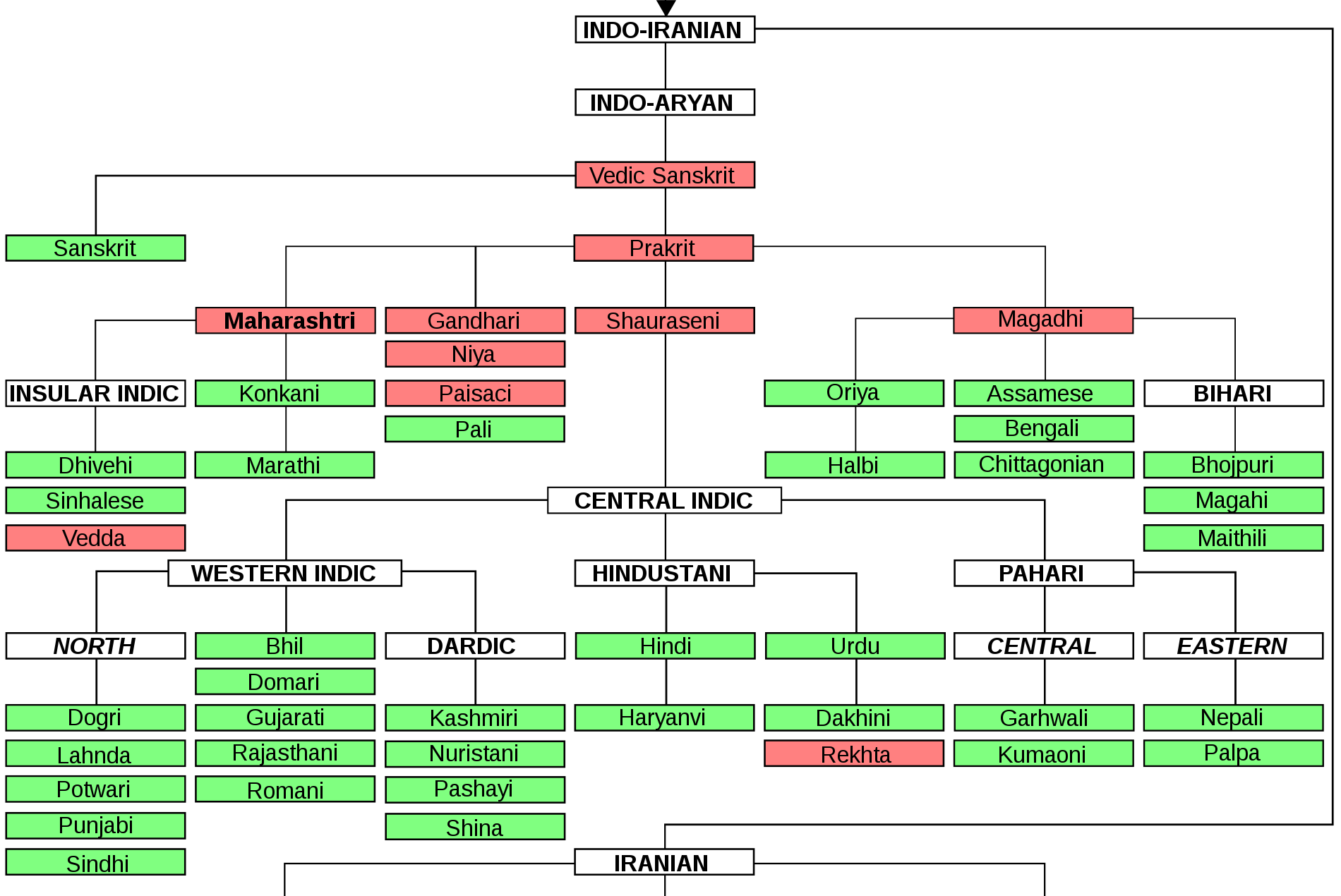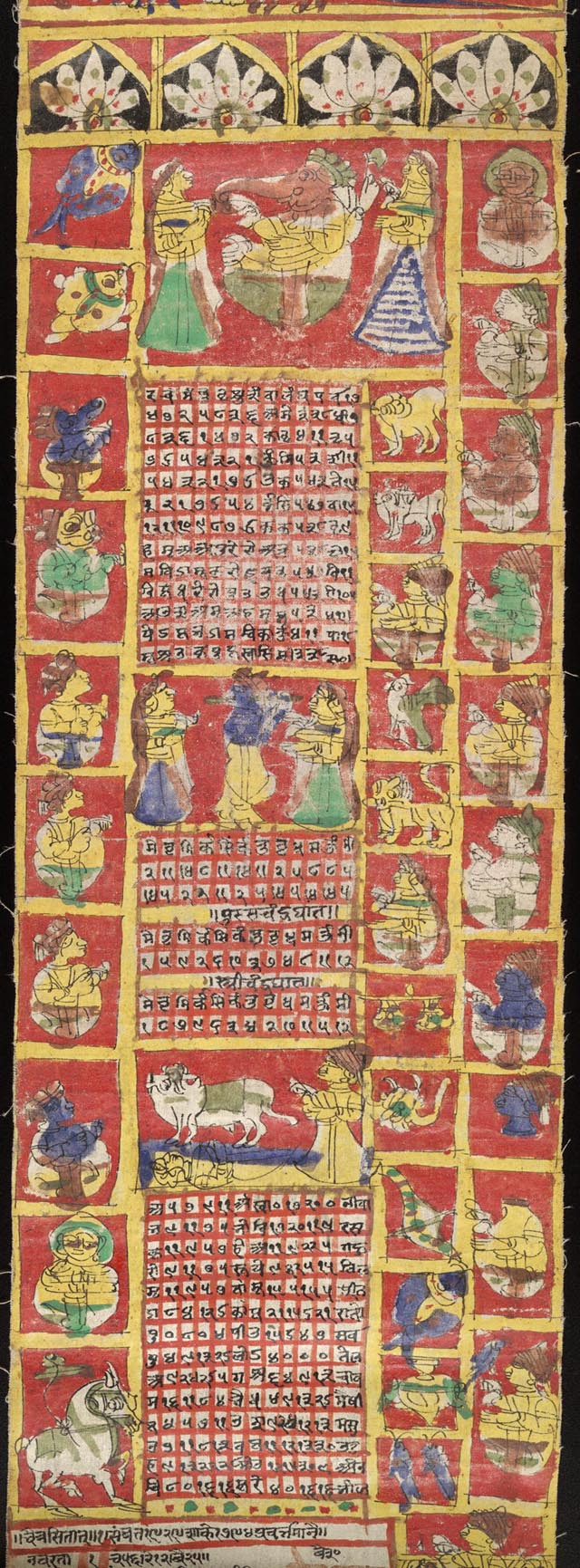|
Chambeali
Chambeali (Takri: ) is an Indo-Aryan language of the Western Pahari group spoken in the Chamba district of Himachal Pradesh. Classification The Chambeali language is a part of the North-Western branch of the Indo-Aryan languages. It is further classified as a member of Western Pahari. The language has a high degree of mutual intelligibility with neighbouring Pahari languages like Mandeali (83%). Geographic distribution Official status The language is commonly called Pahari or Himachali. The language has no official status and is recorded as dialect of Hindi. According to the United Nations Education, Scientific and Cultural Organisation (UNESCO), the language is of definitely endangered category, i.e. many Chambeali children are not learning Chambeali as their mother tongue any longer. Earlier the language got huge amount of state patronage. Everything changed since independence, due to favoritism towards Hindi by the Indian Government. The demand for the inclusion of ... [...More Info...] [...Related Items...] OR: [Wikipedia] [Google] [Baidu] |
Takri Script
The Tākri script (Takri ( Chamba): ; Takri (Jammu/Dogra): ; sometimes called Tankri ) is an abugida writing system of the Brahmic family of scripts. It is derived from the Sharada script formerly employed for Kashmiri. It is the sister script of Laṇḍā scripts. It has another variant Dogra Takri (also known as Dogra Akkhar) employed in Jammu region. There are numerous varieties present throughout Himachal Pradesh. Until the late 1940s, the adapted version of the script (called Dogri, Dogra or Dogra Akkhar) was the official script for writing Punjabi in the princely state of Jammu and Kashmir. Throughout the history, different kingdoms of what now forms Himachal Pradesh used their own variety to maintain their records. The Takri script used in Sirmour in Himachal Pradesh and in the adjacent region of Jaunsar-Bawar in Uttarakhand has some distinction. History The Takri alphabet developed through the ''Devāśeṣa'' stage of the Sharada script from the 14th-18th cent ... [...More Info...] [...Related Items...] OR: [Wikipedia] [Google] [Baidu] |
Himachal Pradesh
Himachal Pradesh (; Sanskrit: ''himācāl prādes;'' "Snow-laden Mountain Province") is a States and union territories of India, state in the northern part of India. Situated in the Western Himalayas, it is one of the thirteen Indian Himalayan Region, mountain states and is characterised by an extreme landscape featuring List of mountain peaks of Himachal Pradesh, several peaks and extensive river systems. Himachal Pradesh is the northernmost state of India and shares borders with the union territories of Jammu and Kashmir (union territory), Jammu and Kashmir and Ladakh to the north, and the states of Punjab (India), Punjab to the west, Haryana to the southwest, Uttarakhand to the southeast and a very narrow border with Uttar Pradesh to the south. The state also shares an international border to the east with the Tibet Autonomous Region in China. Himachal Pradesh is also known as ''Dev Bhoomi'', meaning 'Land of Gods' and ''Veer Bhoomi'' which means 'Land of the Brave'. The pre ... [...More Info...] [...Related Items...] OR: [Wikipedia] [Google] [Baidu] |
Chamba District
Chamba district is the northwestern district of Himachal Pradesh, in India, with its headquarters in Chamba town. The towns of Dalhousie, Khajjhiar and Churah Valley are popular hill stations and vacation spots for the people from the plains of northern India. Economy In 2006 the Ministry of Panchayati Raj named Chamba one of the country's 250 most backward districts (out of a total of 640). It is one of the two districts in Himachal Pradesh currently receiving funds from the Backward Regions Grant Fund Programme (BRGF). Demographics Population According to the 2011 census Chamba district has a population of 519,080, roughly equal to the nation of Cape Verde. This gives it a ranking of 544th in India (out of a total of 640). The district has a population density of . Its population growth rate over the decade 2001–2011 was 12.58%. Chamba has a sex ratio of 989 females for every 1000 males, and a literacy rate of 73.19%. 6.96% of the population lived in urban areas. ... [...More Info...] [...Related Items...] OR: [Wikipedia] [Google] [Baidu] |
Pahari Languages
The Northern Indo-Aryan languages, also known as Pahāṛi languages, are a proposed group of Indo-Aryan languages spoken in the lower ranges of the Himalayas, from Nepal in the east, through the Indian states of Jammu and Kashmir, Uttarakhand, Himachal Pradesh and Punjab (not to be confused with the various other languages with that name) was coined by G. A. Grierson. Classification The Pahari languages fall into three groups. Eastern Pahari * Nepali is spoken by an estimated 29,100,000 people in Nepal, 265,000 people in Bhutan, and 2,500,000 people in India. It is an official language in Nepal and India. * Jumli is spoken by an estimated 40,000 people in the Karnali zone of Nepal. * Doteli is spoken by an estimated 1 million people in far west Nepal. Central Pahari * Kumaoni is spoken by an estimated 2,360,000 people in the Kumaon region of Uttarakhand. * Garhwali is spoken by an estimated 2,900,000 people in Uttarakhand. Most of these are Garhwali people from the ... [...More Info...] [...Related Items...] OR: [Wikipedia] [Google] [Baidu] |
Western Pahari
The Western Pahari languages are a range of languages and dialects of Northern Indo-Aryan languages spoken in the western parts of the Himalayan range, primarily in the Indian state of Himachal Pradesh. They are also spoken in Jammu and Jaunsar-Bawar regions of India. Languages The following table lists the languages classified as belonging to Western Pahari, with the provisional grouping used in Glottolog 4.1: Some Western Pahari languages, like Sarazi, Bhaderwahi and Padder-Pangwali are also spoken further north in Jammu and Kashmir, specifically in the districts of Ramban and Doda. Languages such as Sarazi, Bhaderwahi and Padder-Pangwali have been influenced heavily by Kashmiri language and also influenced the Kashmiri language spoken in the Chenab Valley region. These languages are often referred as a dialect of Kashmiri language. Some Western Pahari languages have occasionally been regarded as dialects of either Dogri, Hindustani, or Punjabi. Notably, some Wes ... [...More Info...] [...Related Items...] OR: [Wikipedia] [Google] [Baidu] |
Mandeali Dialect
Mandeali (Takri: ) is a Western Pahari language, spoken in northern India, predominantly in the Mandi district of Himachal Pradesh by the people of the Mandi Valley and particularly in the major city of Mandi. Other spellings for the name are Mandiyali and Mandiali. UNESCO reports it is one of the highly endangered languages of India. Speakers of the dialect have decreased by 21% from 1961 to 2001. The language is distantly related to Kullvi. The Chambealic varieties are often considered separate languages, but at least some are 90–95% intelligible with Mandeali proper. Its sub-dialect are different than mandeali Dialects Preliminary survey suggests speakers have functional intelligibility of Kangri. People in southeast Mandi district may have more difficulty understanding Kangri. Standard Mandeali is spoken throughout the broad valley running north and south from Jogindernagar to Sundarnagar. Mandeali Pahari is spoken north around Barot, east of Uhl River. Intelligible w ... [...More Info...] [...Related Items...] OR: [Wikipedia] [Google] [Baidu] |
Indo-Aryan Language
The Indo-Aryan languages, or sometimes Indic languages, are a branch of the Indo-Iranian languages in the Indo-European language family. As of 2024, there are more than 1.5 billion speakers, primarily concentrated east of the Indus river in Bangladesh, Northern India, Eastern Pakistan, Sri Lanka, Maldives and Nepal. Moreover, apart from the Indian subcontinent, large immigrant and expatriate Indo-Aryan–speaking communities live in Northwestern Europe, Western Asia, North America, the Caribbean, Southeast Africa, Polynesia and Australia, along with several million speakers of Romani languages primarily concentrated in Southeastern Europe. There are over 200 known Indo-Aryan languages. Modern Indo-Aryan languages descend from Old Indo-Aryan languages such as early Vedic Sanskrit, through Middle Indo-Aryan languages (or Prakrits). The largest such languages in terms of first-speakers are Hindi–Urdu (),Standard Hindi first language: 260.3 million (2001), as second language: ... [...More Info...] [...Related Items...] OR: [Wikipedia] [Google] [Baidu] |
Indo-Aryan Languages
The Indo-Aryan languages, or sometimes Indic languages, are a branch of the Indo-Iranian languages in the Indo-European languages, Indo-European language family. As of 2024, there are more than 1.5 billion speakers, primarily concentrated east of the Indus river in Bangladesh, Northern India, Eastern Pakistan, Sri Lanka, Maldives and Nepal. Moreover, apart from the Indian subcontinent, large immigrant and expatriate Indo-Aryan–speaking communities live in Northwestern Europe, Western Asia, North America, the Caribbean, Southeast Africa, Polynesia and Australia, along with several million speakers of Romani languages primarily concentrated in Southeast Europe, Southeastern Europe. There are over 200 known Indo-Aryan languages. Modern Indo-Aryan languages descend from Old Indo-Aryan languages such as early Vedic Sanskrit, through Middle Indo-Aryan languages (or Prakrits). The largest such languages in terms of First language, first-speakers are Hindustani language, Hindi–Urdu ... [...More Info...] [...Related Items...] OR: [Wikipedia] [Google] [Baidu] |
Hindu Calendar
The Hindu calendar, also called Panchangam, Panchanga (), is one of various lunisolar calendars that are traditionally used in the Indian subcontinent and Southeast Asia, with further regional variations for social and Hindu religious purposes. They adopt a similar underlying concept for timekeeping based on sidereal year for solar cycle, solar cycle and adjustment of lunar cycles in every three years, but differ in their relative emphasis to moon cycle or the sun cycle and the names of months and when they consider the New Year to start. Of the various regional calendars, the most studied and known Hindu calendars are the Shaka era, Shalivahana Shaka (Based on the Shalivahana, King Shalivahana, also the Indian national calendar) found in the Deccan Plateau, Deccan region of Southern India and the Vikram Samvat (Bikrami) found in Nepal and the North and Central regions of India – both of which emphasize the lunar cycle. Their new year starts in spring. In regions such as Tamil ... [...More Info...] [...Related Items...] OR: [Wikipedia] [Google] [Baidu] |
Endangered Languages Of India
An endangered species is a species that is very likely to become extinct in the near future, either worldwide or in a particular political jurisdiction. Endangered species may be at risk due to factors such as habitat loss, poaching, invasive species, and climate change. The International Union for Conservation of Nature (IUCN) Red List lists the global conservation status of many species, and various other agencies assess the status of species within particular areas. Many nations have laws that protect conservation-reliant species which, for example, forbid hunting, restrict land development, or create protected areas. Some endangered species are the target of extensive conservation efforts such as captive breeding and habitat restoration. Human activity is a significant cause in causing some species to become endangered. Conservation status The conservation status of a species indicates the likelihood that it will become extinct. Multiple factors are considered whe ... [...More Info...] [...Related Items...] OR: [Wikipedia] [Google] [Baidu] |





